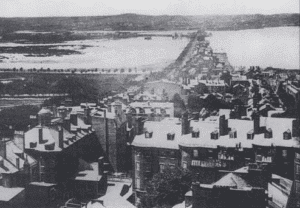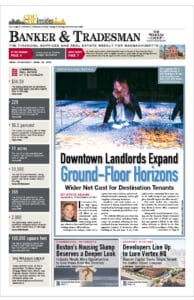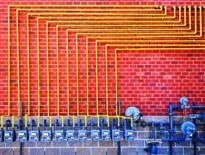
The tidal basin that would become Boston’s Back Bay is seen from the top of Beacon Hill in 1858. The causeway and mill dam that is now Beacon Street stretches out towards in the right of the photograph. Photographer unknown | Public domain
What: Filling in of Back Bay Begins
When: Aug. 10, 1857
Where: Boston
Faced with a huge tidal marsh made fetid by untreated sewage and railroad bridges that stymied the ocean’s flow, plus a need to accommodate a growing population and economy, Boston began filling in land to make the Back Bay.
To finance the first phase of the construction, the state sold the entire block on the south side of Beacon Street between what would become Arlington and Boylston streets for $70,000 to William W. Goddard and T. Bigelow Lawrence on Aug. 10, 1857 according to historian Nancy S. Seasholes.
At the outset, developers and builders of prospective mansions paid around $3 per square foot for land on Commonwealth Avenue and $1.50 per square foot for land on Marlborough or Newbury Streets. By contrast, a condominium at 17 Commonwealth Ave. recently sold for $1,850 per square foot.
“This was the premier, planned, manmade neighborhood of Boston. It was the quintessential Victorian neighborhood of New England.”
— Historian Anthony Sammarco to the Boston Herald’s “Boston History Project”
To celebrate its 150th anniversary, Banker & Tradesman is highlighting significant moments in the history of Massachusetts’ real estate and banking industries. To suggest a topic, email editorial@thewarrengroup.com.





